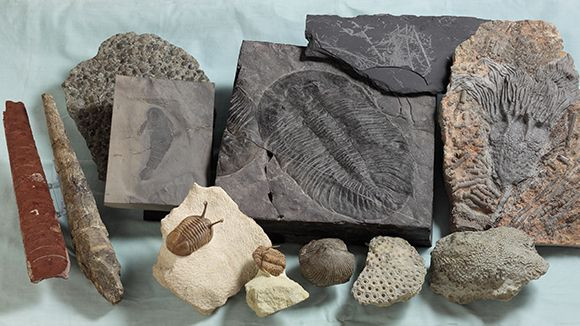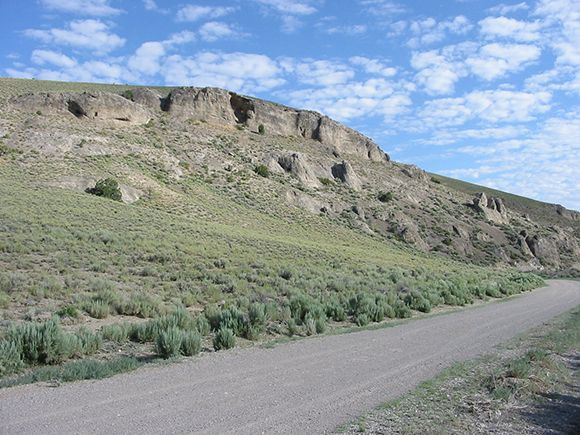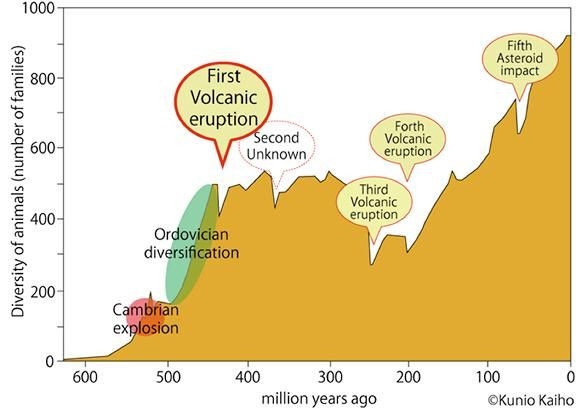Volcano Eruption May Have Caused First Mass Extinction 450 Million Years Ago

Toward the end of the Ordovician Period about 444 million years ago, life was still largely confined to Earth’s oceans and seas, but it still had a lot of diversity, including the appearance of the first known bony vertebrates. However, a mass extinction event, the first of the big five of its kind, took place at the time and wiped out almost 80 percent of all living species.
Called the Ordovician-Silurian extinction, it affected ancient sea creatures and is thought to be the third-largest extinction event to have taken place on Earth. But we don’t know what caused the catastrophic event to occur. However, new research conducted by scientists from Japan and the United States suggests an answer, even if it is somewhat predictable: volcanic activity.
Read: A Timeline Of Mass Extinction Events
In a study titled “A volcanic trigger for the Late Ordovician mass extinction? Mercury data from south China and Laurentia,” published in the May issue of the journal Geology, its authors first explain why they investigated this subject.
The Ordovician mass extinction “occurred in two pulses associated with the expansion and contraction of ice sheets on Gondwana during the Hirnantian Age. It is widely recognized that environmental disruptions associated with changing glacial conditions contributed to the extinctions, but neither the kill mechanisms nor the causes of glacial expansion are well understood,” the authors said.
The researchers, led by David S. Jones of Amherst College in Massachusetts and Kunio Kaiho of Japan’s Tohoku University, took samples of sedimentary rock from locations in China and the U.S. Analyzing them for their mercury (Hg) content showed a coincidence between Hg enrichment and mass extinction in both the regions.
The regions they chose are both large igneous provinces (LIPs), which is a geological term for a very large accumulation of igneous rocks — rocks that form when lava or magma cools down. The creation of some LIPs has already been linked to later mass extinction events. In their analysis, researchers found an anomaly in the concentration of Hg, a phenomenon that has been linked to other mass extinctions.

“Huge volcanic eruptions can produce sulfate aerosols in the stratosphere. Sulfate aerosols are strong, light-reflecting aerosols and cause global cooling. This rapid climate change is believed to be behind the loss of marine creatures,” the researchers explained in a statement.
Volcanic activity was what brought about the much bigger Permian-Triassic mass extinction event almost 200 million years later which was likely survived by less than 5 percent of all species that were around then. Volcanoes were also responsible for the Triassic-Jurassic extinction event that followed, occurring about 40 million years later or 210 million years ago.
The fifth and the last mass extinction event, however — the Cretaceous-Tertiary — that killed off the dinosaurs and about half of all other species as well, 65.5 million years ago, was caused by the impact of an asteroid strike.

We still don’t know the trigger for the second mass extinction event, the Devonian, which took place some 365 million years ago. A mass extinction event is one that kills over half of all species alive at the time in a relatively short duration.
© Copyright IBTimes 2024. All rights reserved.





















